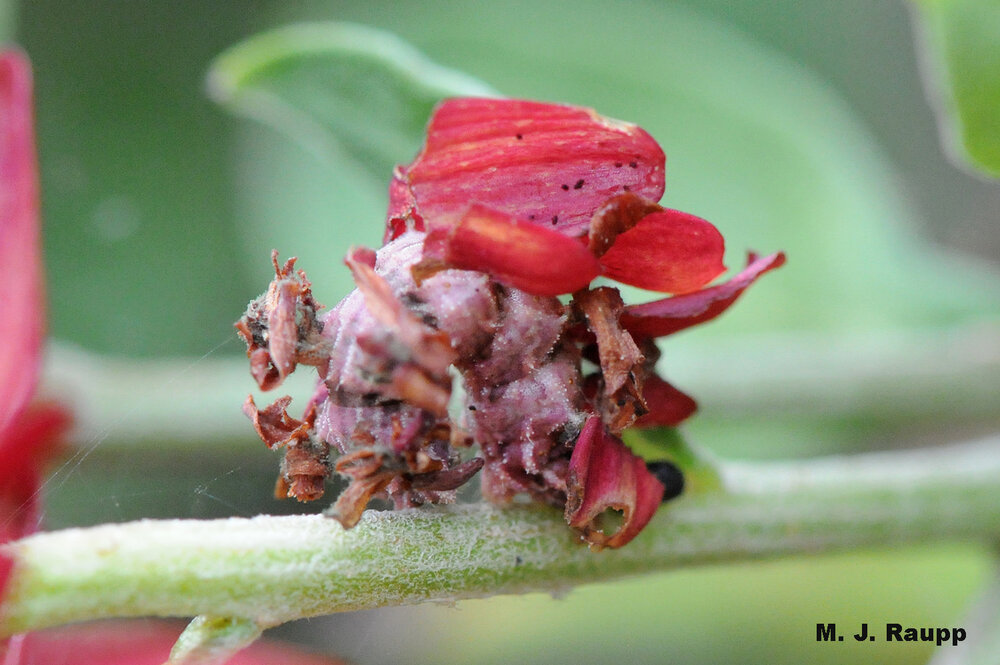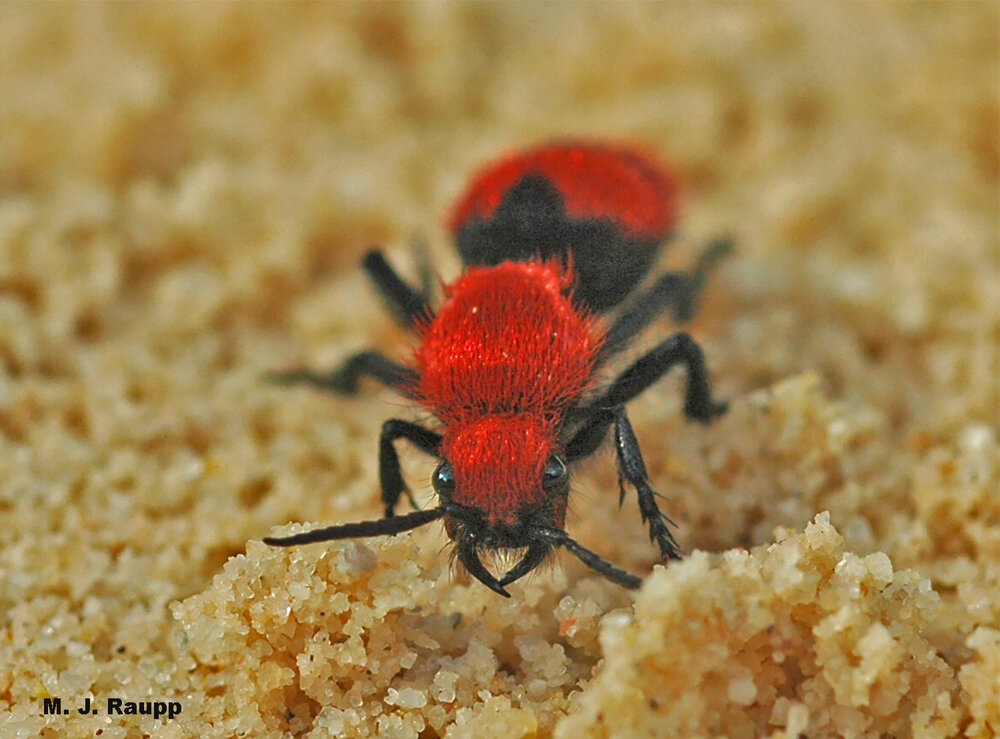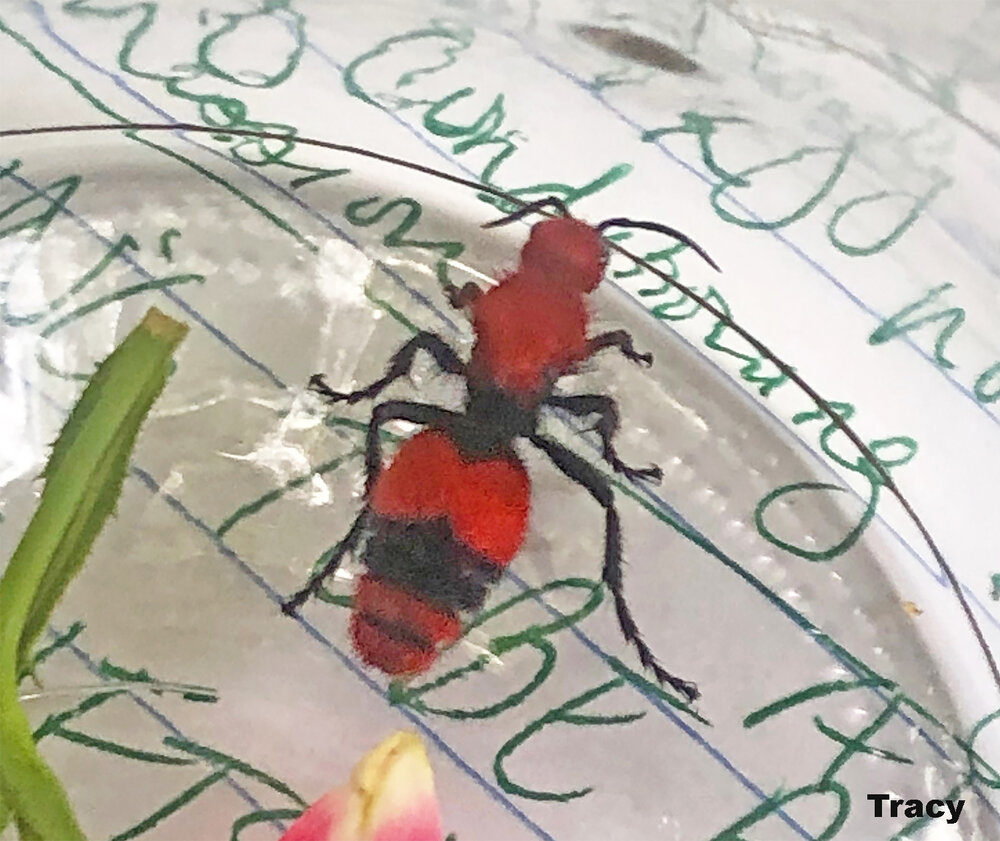Giant silk moth larvae prepare for winter: Imperial moth, Eacles imperialis

Gorgeous Imperial moths can sometimes be spotted on tree trunks where they await their mate.
Last week a keen naturalist shared images and videos of a rather large caterpillar taking a stroll along what appeared to be a paved path or roadway. While rather homely in its youth, this giant larva turns into one of the most astoundingly beautiful moths found on the planet, the Imperial moth. In previous episodes we met other gorgeous members of the giant silk moth clan including, Promethea, Polyphemus, Royal Walnut, Luna, and Cecropia. As the name implies, silk moths produce silk from spinnerets associated with their mouthparts. Several species use this silk to form a durable cocoon in which to pupate and survive winter’s chill. However, larvae of the Imperial moth burrow into the ground and form an earthen chamber in which they transform to a pupa. With the return of warm weather, adult Imperial moths emerge from the soil to seek mates. At night, females fly to the canopy of trees where they release sex pheromones to attract a suitor. Following a successful romantic interlude, females deposit eggs singly or in groups of 2 to 5 on leaves. Caterpillars hatch from the eggs in about two weeks and then feed for several more on the leaves of a wide variety of woody and evergreen trees. Dr. Douglas Ferguson, an expert on silk moths, lists oak, hickory, walnut, sycamore, basswood, maple, honey locust, chokecherry, sumac, sweet gum, sassafras, elm, beech, hornbeam, birch, alder, pine, spruce, hemlock, cedar, cypress, and juniper as food sources of Imperial moth caterpillars. The prodigious appetites of Imperial moth caterpillars ensure that larvae acquire adequate nutrients to sustain them both during larval development and also as adults. Mouthparts of Imperial moths are vestigial; adults do not feed.
In late summer and early autumn, Imperial moth caterpillars depart their lofty feeding grounds in the canopies of trees. After a perilous journey across human-made structures like pathways and roads, they reach the safety of soil where they will disappear underground to form pupal chambers. With the return of warm weather and foliage on trees, beautiful adult moths will emerge from the earth to mate and deposit eggs on leaves.
Imperial moths are found from Canada to Argentina, although populations of Imperial moths in parts of New England have declined. This is very evident in states such as Connecticut, where experts report the Imperial moth to be extirpated. Some believe this decline is linked to insecticide applications used in agriculture or to control nefarious gypsy moth caterpillars. Release of exotic parasitoid flies that attack and kill not only gypsy moth caterpillars but also other caterpillars, including several members of the silk moth clan, may also contribute to the demise of Imperials. Another factor believed to imperil Imperial moths and their relatives are high intensity street lamps that are very attractive to night-flying moths. These artificial illuminators may expose insects to predators or disrupt the normal mating rituals of many insects, including silk moths. Despite the decline of Imperial moth in parts of New England, this remarkable insect thrives throughout much of its range in North, Central, and South America. The image of the adult Imperial moth in this episode was taken on a maple tree at a child care center in Columbia, Maryland. Although rare or absent in much of New England, on the isle of Martha’s Vineyard a sturdy, pine-eating race of Imperial moths seems to have escaped the perils of habitat destruction, pesticides, and imported parasitoids. For fortunate vacationers heading to that picturesque island, the Imperial moth serves as a spectacular reminder of a less human-muddled natural world.
Acknowledgements
Bug of the Week thanks Frank Roylance for sharing video and images that inspired this episode, Dr. Shrewsbury for spotting an Imperial moth caterpillar dawdling on a tree trunk along the C & O canal, and Harry Walker of Child’s Garden for alerting us to the beautiful Imperial moth on a maple tree at his day care center. “Life history of the Imperial Moth Eacles imperialis (Drury) (Saturniidae: Ceratocampinae) in New England, U.S.A.: distribution, decline, and nutritional ecology of a relictual islandic population” by Paul Goldstein, “The moths of America North of Mexico, Fascicle 20.2A Bombycoidea: Saturniidae (Part)” by Douglas C. Ferguson, “Moth decline in the Northeastern United States” by David L. Wagner, and “Common name: imperial moth, scientific name: Eacles imperialis imperialis (Drury, 1773) (Insecta: Lepidoptera: Saturniidae: Ceratocampinae)” by Donald Hall provided excellent background information for this episode.
This post appeared first on Bug of the Week

















